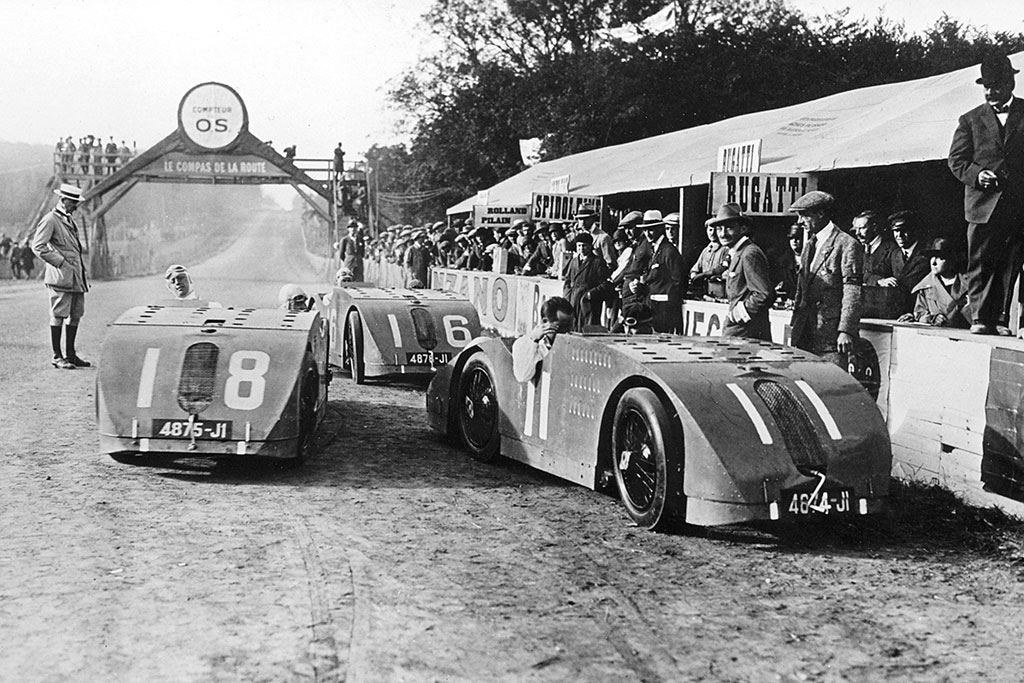Bugatti marks 100 years since racing debut of Type 32 'Tank'
05 Jul 2023|207 views
Bugatti is celebrating the 100th anniversary of the racing debut of its Type 32 'Tank'.
The Type 32 'Tank' gets its name from the extensive use of visible rivets and bolts throughout its body, while its unique shape is said to have laid the foundations for various aerodynamic motorsport innovations.
The innovative vehicle made its racing debut at the French Grand Prix on 2 July 1923, where it captured the fascination of the 30,000 spectators gathered thanks to its short wheelbase and narrow track, which made it stand out from the rest of the vehicles gathered on the grid.
The Type 32 featured an airplane-inspired, wing-shaped body, a result of Bugatti's conviction that aerodynamics would play an important role in enhancing the performance of racing cars. It utilised a 2.0-litre eight-cylinder engine that is said to offer close to 89bhp.
A total of five Type 32s were built - one prototype and four other cars that took part in the grand prix. Of these four cars, the most successful was piloted by Driver Ernest Friderich, who finished third and completed the race with an average speed of just over 112km/h.
Tours, France, was to be the Type 32's only Grand Prix appearance, as Bugatti would turn its attention to developing the iconic Type 35. Despite the short Grand Prix career of the Type 32, the belief that aerodynamic efficiency could play such a pivotal role in motorsport was eventually realised in the streamlined design of the Bugatti 57G, which dominated endurance racing in the 1930s, demonstrating that Ettore Bugatti's vision was correct.
Bugatti is celebrating the 100th anniversary of the racing debut of its Type 32 'Tank'.
The Type 32 'Tank' gets its name from the extensive use of visible rivets and bolts throughout its body, while its unique shape is said to have laid the foundations for various aerodynamic motorsport innovations.
The innovative vehicle made its racing debut at the French Grand Prix on 2 July 1923, where it captured the fascination of the 30,000 spectators gathered thanks to its short wheelbase and narrow track, which made it stand out from the rest of the vehicles gathered on the grid.
The Type 32 featured an airplane-inspired, wing-shaped body, a result of Bugatti's conviction that aerodynamics would play an important role in enhancing the performance of racing cars. It utilised a 2.0-litre eight-cylinder engine that is said to offer close to 89bhp.
A total of five Type 32s were built - one prototype and four other cars that took part in the grand prix. Of these four cars, the most successful was piloted by Driver Ernest Friderich, who finished third and completed the race with an average speed of just over 112km/h.
Tours, France, was to be the Type 32's only Grand Prix appearance, as Bugatti would turn its attention to developing the iconic Type 35. Despite the short Grand Prix career of the Type 32, the belief that aerodynamic efficiency could play such a pivotal role in motorsport was eventually realised in the streamlined design of the Bugatti 57G, which dominated endurance racing in the 1930s, demonstrating that Ettore Bugatti's vision was correct.
Latest COE Prices
May 2025 | 1st BIDDING
NEXT TENDER: 21 May 2025
CAT A$103,009
CAT B$119,890
CAT C$62,590
CAT E$118,889
View Full Results Thank You For Your Subscription.
























